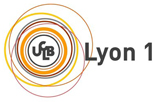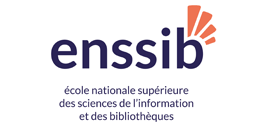Modèles génératifs : diffusion, flow matching et leurs applications
| When |
Oct 24, 2025
from 09:00 to 05:30 |
|---|---|
| Where | Amphi D2, Ecole normale supérieure de Lyon, site Descartes 15 parvis René Descartes, 69342 Lyon |
| Contact Name | Mathurin Massias |
| Add event to calendar |
|
Les inscriptions à la réunion sont closes, mais il est toujours possible de participer à distance. Un lien Zoom sera affiché sur cette page quelques jours avant la réunion.
Physical registration is now closed du to exceeded room capacity; it is still possible to attend remotely: a Zoom link will be displayed on this webpage a few days before the workshop.
Les modèles génératifs ont connu de récentes avancées spectaculaires, au point que leurs dernières versions sont désormais capables de produire des images et du texte synthétiques presque indiscernables de contenus réels. Parmi les approches ayant contribué à ces progrès, les approches de diffusion et de flow matching occupent une place centrale.
Cette réunion vise à faire le point sur les avancées récentes, aussi bien fondamentales qu’appliquées, dans le domaine des modèles génératifs, avec un accent particulier sur les applications en traitement d’images. L’appel à contributions est ouvert aux travaux portant sur des développements théoriques, algorithmiques, ou des applications originales. Une liste non exhaustive de thèmes inclut :
- généralisation des méthodes de diffusion et flow matching
- entraînement des modèles génératifs
- passage à l’échelle pour la génération
- diffusion et flow matching pour les données discrètes et le texte
- liens avec le transport optimal
- évaluation des modèles génératifs
- intégration des modèles génératifs dans les applications en traitement d’image
La journée aura lieu le vendredi 24 octobre 2025 à l’ENS de Lyon (site Descartes, Amphi D2).
All the talks will be in English.
Les demandes de prise en charge de mission doivent parvenir à la gestionnaire du GDR avant le 10 octobre.
Programme/Schedule
- 9 h – 9 h 15 Participants welcome
- 9 h 15 – 9 h 25 Introduction
- 9 h 25 – 10 h 15 Long Talk 1: Eric Vanden Eijnden
- 10 h 15 – 10 h 40 ST1 Anne Gagneux
- 10 h 40 – 10 h 55 Coffe break
- 10 h 55 – 11 h 20 ST2: Scott Pesme
- 11 h 20 – 11 h 45 ST3: Thibaut Issenhuth
- 11 h 45 – 12 h 15 Poster pitch
- 12 h 15 – 13 h 45 Lunch break
- 13 h 45 – 15 h 15 Poster session
- 15 h 15 – 16 h 05 Long Talk 2: Claire Boyer
- 16 h 05 – 16 h 15 Coffee break
- 16 h 15 – 16 h 40 ST4: Ségolène Martin
- 16 h 40 – 17 h 05 ST5: Samuel Hurault
- 17 h 05 – 17 h 30 ST6: Dario Shariatian
Orateurs invités/Plenary Speakers
- Eric Vanden Eijnden (Courant Institute of Mathematical Sciences NYU / DMA, ENS Paris)
Generative modeling with flows and diffusions
Dynamical transport-based generative models have revolutionized unsupervised learning. These models construct maps between probability distributions, transforming samples from one into samples from another. While initially developed for image generation, they also show promise in previously intractable high-dimensional problems across scientific computing domains. This talk explores the mathematical foundations of flow and diffusion-based generative models, demonstrating how deeper understanding of their mechanisms improves design. I’ll present methods for structuring transport to efficiently reach complex target distributions while optimizing both learning and sampling. - Claire Boyer (Laboratoire de Mathématiques d’Orsay)
Taking a Big Step: Large Learning Rates in Denoising Score Matching Prevent Memorization
Denoising score matching plays a pivotal role in the performance of diffusion-based generative models. However, the empirical optimal score–the exact solution to the denoising score matching–leads to memorization, where generated samples replicate the training data. Yet, in practice, only a moderate degree of memorization is observed, even without explicit regularization. In this paper, we investigate this phenomenon by uncovering an implicit regularization mechanism driven by large learning rates. Specifically, we show that in the small-noise regime, the empirical optimal score exhibits high irregularity. We then prove that, when trained by stochastic gradient descent with a large enough learning rate, neural networks cannot stably converge to a local minimum with arbitrarily small excess risk. Consequently, the learned score cannot be arbitrarily close to the empirical optimal score, thereby mitigating memorization. To make the analysis tractable, we consider one-dimensional data and two-layer neural networks. Experiments validate the crucial role of the learning rate in preventing memorization, even beyond the one-dimensional setting.
Abstracts:
Anne Gagneux: On the closed-form of Flow Matching
A growing body of research aims to understand why recent methods — such as diffusion and flow matching techniques — generalize so effectively. Among the proposed explanations are the inductive biases of deep learning architectures and the stochastic nature of the conditional flow matching loss. In this work, we rule out the latter — the noisy nature of the loss — as a primary contributor to generalization in flow matching. First, we empirically show that in high-dimensional settings, the stochastic and closed-form versions of the flow matching loss yield nearly equivalent losses. Then, using state-of-the-art flow matching models on standard image datasets, we demonstrate that both variants achieve comparable statistical performance, with the surprising observation that using the closed-form can even improve performance.
Scott Pesme: MAP Estimation with Denoisers: Convergence Rates and Guarantees
Denoiser models have become powerful tools for inverse problems, enabling the use of pretrained networks to approximate the score of a smoothed prior distribution. These models are often used in heuristic iterative schemes aimed at solving Maximum a Posteriori (MAP) optimisation problems, where the proximal operator of the negative log-prior plays a central role. In practice, this operator is intractable, and practitioners plug in a pretrained denoiser as a surrogate-despite the lack of general theoretical justification for this substitution. In this work, we show that a simple algorithm, closely related to several used in practice, provably converges to the proximal operator under a log-concavity assumption on the prior p. We show that this algorithm can be interpreted as a gradient descent on smoothed proximal objectives. Our analysis thus provides a theoretical foundation for a class of empirically successful but previously heuristic methods.
Thibaut Issenhuth: Improving Consistency Models with Generator-Augmented Flows
Consistency models imitate the multi-step sampling of score-based diffusion in a single forward pass of a neural network. They can be learned in two ways: consistency distillation and consistency training. The former relies on the true velocity field of the corresponding differential equation, approximated by a pre-trained neural network. In contrast, the latter uses a single-sample Monte Carlo estimate of this velocity field. The related estimation error induces a discrepancy between consistency distillation and training that, we show, still holds in the continuous-time limit. To alleviate this issue, we propose a novel flow that transports noisy data towards their corresponding outputs derived from a consistency model. We prove that this flow reduces the previously identified discrepancy and the noise-data transport cost. Consequently, our method not only accelerates consistency training convergence but also enhances its overall performance
Ségolène Martin: From Flow Matching to Denoising, and back
TBA
Samuel Hurault: From Score Matching to Diffusion: A Fine-Grained Error Analysis in the Gaussian Setting
Sampling from an unknown distribution, accessible only through discrete samples, is a fundamental problem at the core of generative AI. The current state-of-the-art methods follow a two-step process: first, estimating the score function (the gradient of a smoothed log-distribution) and then applying a diffusion-based sampling algorithm — such as Langevin or Diffusion models. The resulting distribution’s correctness can be impacted by four major factors: the generalization and optimization errors in score matching, and the discretization and minimal noise amplitude in the diffusion. In this paper, we make the sampling error explicit when using a diffusion sampler in the Gaussian setting. We provide a sharp analysis of the Wasserstein sampling error that arises from these four error sources. This allows us to rigorously track how the anisotropy of the data distribution (encoded by its power spectrum) interacts with key parameters of the end-to-end sampling method, including the number of initial samples, the stepsizes in both score matching and diffusion, and the noise amplitude. Notably, we show that the Wasserstein sampling error can be expressed as a kernel-type norm of the data power spectrum, where the specific kernel depends on the method parameters. This result provides a foundation for further analysis of the tradeoffs involved in optimizing sampling accuracy.
Dario Shariatian : Algorithm- and Data-Dependent Generalization Bounds for Score-Based Generative Models
Score-based generative models (SGMs) have emerged as one of the most popular classes of generative models. A substantial body of work now exists on the analysis of SGMs, focusing either on discretization aspects or on their statistical performance. In the latter case, bounds have been derived, under various metrics, between the true data distribution and the distribution induced by the SGM, often demonstrating polynomial convergence rates with respect to the number of training samples. However, these approaches adopt a largely approximation theory viewpoint, which tends to be overly pessimistic and relatively coarse. In particular, they fail to fully explain the empirical success of SGMs or capture the role of the optimization algorithm used in practice to train the score network. To support this observation, we first present simple experiments illustrating the concrete impact of optimization hyperparameters on the generalization ability of the generated distribution. Then, this paper aims to bridge this theoretical gap by providing the first algorithmic- and data-dependent generalization analysis for SGMs. In particular, we establish bounds that explicitly account for the optimization dynamics of the learning algorithm, offering new insights into the generalization behavior of SGMs. Our theoretical findings are supported by empirical results on several datasets.
Organisateur/Organizer : Mathurin Massias (INRIA, LIP, Lyon)










